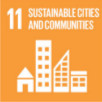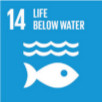The year 2015 has been a milestone for global development as governments have adopted the 2030 Agenda for Sustainable Development, along with the Sustainable Development Goals (SDGs). The bold agenda sets out a global framework to end extreme poverty, fight inequality and injustice, and fix climate change until 2030. Building on the historic Millennium Development Goals (MDGs), the ambitious set of 17 Sustainable Development Goals and 169 associated targets is people-centred, transformative, universal and integrated.

Harnessing tourism’s benefits will be critical to achieving the sustainable development goals and implementing the post-2015 development agenda
Tourism has the potential to contribute, directly or indirectly, to all of the goals. In particular, it has been included as targets in Goals 8, 12 and 14 on inclusive and sustainable economic growth, sustainable consumption and production (SCP) and the sustainable use of oceans and marine resources, respectively.
Sustainable tourism is firmly positioned in the 2030 Agenda. Achieving this agenda, however, requires a clear implementation framework, adequate financing and investment in technology, infrastructure and human resources.
GOAL 1: NO POVERTY
 As one of the largest and fastest growing economic sectors in the world, tourism is well-positioned to foster economic growth and development at all levels and provide income through job creation. Sustainable tourism development, and its impact at community level, can be linked with national poverty reduction goals, those related to promoting entrepreneurship and small businesses, and empowering less favored groups, particularly youth and women.
As one of the largest and fastest growing economic sectors in the world, tourism is well-positioned to foster economic growth and development at all levels and provide income through job creation. Sustainable tourism development, and its impact at community level, can be linked with national poverty reduction goals, those related to promoting entrepreneurship and small businesses, and empowering less favored groups, particularly youth and women.
GOAL 2: ZERO HUNGER
 Tourism can spur agricultural productivity by promoting the production, use and sale of local produce in tourist destinations and its full integration in the tourism value chain. In addition, agro-tourism, a growing tourism segment, can complement traditional agricultural activities. The resulting rise of income in local communities can lead to a more resilient agriculture while enhancing the value of the tourism experience.
Tourism can spur agricultural productivity by promoting the production, use and sale of local produce in tourist destinations and its full integration in the tourism value chain. In addition, agro-tourism, a growing tourism segment, can complement traditional agricultural activities. The resulting rise of income in local communities can lead to a more resilient agriculture while enhancing the value of the tourism experience.
GOAL 3: GOOD HEALTH AND WELL-BEING
 Tourism’s contribution to economic growth and development can also have a knock-on effect on health and well-being. Foreign earnings and tax income from tourism can be reinvested in health care and services, which should aim to improve maternal health, reduce child mortality and prevent diseases, among others.
Tourism’s contribution to economic growth and development can also have a knock-on effect on health and well-being. Foreign earnings and tax income from tourism can be reinvested in health care and services, which should aim to improve maternal health, reduce child mortality and prevent diseases, among others.
GOAL 4: QUALITY EDUCATION
 A well-trained and skillful workforce is crucial for tourism to prosper. The sector can provide incentives to invest in education and vocational training and assist labor mobility through cross-border agreements on qualifications, standards and certifications. In particular youth, women, senior citizens, indigenous peoples and those with special needs should benefit through educational means, where tourism has the potential to promote inclusiveness, the values of a culture of tolerance, peace and non-violence, and all aspects of global exchange and citizenship.
A well-trained and skillful workforce is crucial for tourism to prosper. The sector can provide incentives to invest in education and vocational training and assist labor mobility through cross-border agreements on qualifications, standards and certifications. In particular youth, women, senior citizens, indigenous peoples and those with special needs should benefit through educational means, where tourism has the potential to promote inclusiveness, the values of a culture of tolerance, peace and non-violence, and all aspects of global exchange and citizenship.
GOAL 5: GENDER EQUALITY
 Tourism can empower women in multiple ways, particularly through the provision of jobs and through income-generating opportunities in small and larger-scale tourism and hospitality related enterprises. As one of the sectors with the highest share of women employed and entrepreneurs, tourism can be a tool for women to unlock their potential, helping them to become fully engaged and lead in every aspect of society.
Tourism can empower women in multiple ways, particularly through the provision of jobs and through income-generating opportunities in small and larger-scale tourism and hospitality related enterprises. As one of the sectors with the highest share of women employed and entrepreneurs, tourism can be a tool for women to unlock their potential, helping them to become fully engaged and lead in every aspect of society.
GOAL 6: CLEAN WATER AND SANITATION
 Tourism can play a critical role in achieving water access and security, as well as hygiene and sanitation for all. The efficient use of water in the tourism sector, coupled with appropriate safety measures, wastewater management, pollution control and technology efficiency can be key to safeguarding our most precious resource.
Tourism can play a critical role in achieving water access and security, as well as hygiene and sanitation for all. The efficient use of water in the tourism sector, coupled with appropriate safety measures, wastewater management, pollution control and technology efficiency can be key to safeguarding our most precious resource.
GOAL 7: AFFORDABLE AND CLEAN ENERGY
 As a sector that requires substantial energy input, tourism can accelerate the shift toward renewable energy and increase its share in the global energy mix. Consequently, by promoting sound and long-term investments in sustainable energy sources, tourism can help to reduce greenhouse gas emissions, mitigate climate change and contribute to innovative and new energy solutions in urban, regional and remote areas.
As a sector that requires substantial energy input, tourism can accelerate the shift toward renewable energy and increase its share in the global energy mix. Consequently, by promoting sound and long-term investments in sustainable energy sources, tourism can help to reduce greenhouse gas emissions, mitigate climate change and contribute to innovative and new energy solutions in urban, regional and remote areas.
GOAL 8: DECENT WORK AND ECONOMIC GROWTH
 Tourism is one of the driving forces of global economic growth and currently provides for 1 in 11 jobs worldwide. By giving access to decent work opportunities in the tourism sector, society –particularly youth and women – can benefit from increased skills and professional development. The sector’s contribution to job creation is recognized in Target 8.9 “By 2030, devise and implement policies to promote sustainable tourism that creates jobs and promotes local culture and products”.
Tourism is one of the driving forces of global economic growth and currently provides for 1 in 11 jobs worldwide. By giving access to decent work opportunities in the tourism sector, society –particularly youth and women – can benefit from increased skills and professional development. The sector’s contribution to job creation is recognized in Target 8.9 “By 2030, devise and implement policies to promote sustainable tourism that creates jobs and promotes local culture and products”.
GOAL 9: INDUSTRY, INNOVATION AND INFRASTRUCTURE
 Tourism development relies on good public and privately supplied infrastructure and an innovative environment. The sector can also incentivize national governments to upgrade their infrastructure and retrofit their industries, making them more sustainable, resource-efficient and clean, as a means to attract tourists and other sources of foreign investment. This should also facilitate further sustainable industrialization, necessary for economic growth, development and innovation.
Tourism development relies on good public and privately supplied infrastructure and an innovative environment. The sector can also incentivize national governments to upgrade their infrastructure and retrofit their industries, making them more sustainable, resource-efficient and clean, as a means to attract tourists and other sources of foreign investment. This should also facilitate further sustainable industrialization, necessary for economic growth, development and innovation.
GOAL 10: REDUCED INEQUALITIES
 Tourism can be a powerful tool for community development and reducing inequalities if it engages local populations and all key stakeholders in its development. Tourism can contribute to urban renewal and rural development and reduce regional imbalances by giving communities the opportunity to prosper in their place of origin. Tourism is also an effective means for developing countries to take part in the global economy. In 2014, Least Developed Countries (LDCs) received US$ 16.4 billion in exports from international tourism, up from US$ 2.6 billion in 2000, making the sector an important pillar of their economies (7% of total exports) and helping some to graduate from the LDC status.
Tourism can be a powerful tool for community development and reducing inequalities if it engages local populations and all key stakeholders in its development. Tourism can contribute to urban renewal and rural development and reduce regional imbalances by giving communities the opportunity to prosper in their place of origin. Tourism is also an effective means for developing countries to take part in the global economy. In 2014, Least Developed Countries (LDCs) received US$ 16.4 billion in exports from international tourism, up from US$ 2.6 billion in 2000, making the sector an important pillar of their economies (7% of total exports) and helping some to graduate from the LDC status.
GOAL 11: SUSTAINABLE CITIES AND COMMUNITIES
 A city that is not good for its citizens is not good for tourists. Sustainable tourism has the potential to advance urban infrastructure and universal accessibility, promote regeneration of areas in decay and preserve cultural and natural heritage, assets on which tourism depends. Greater investment in green infrastructure (more efficient transport facilities, reduced air pollution, conservation of heritage sites and open spaces, etc.) should result in smarter and greener cities from which not only residents, but also tourists, can benefit.
A city that is not good for its citizens is not good for tourists. Sustainable tourism has the potential to advance urban infrastructure and universal accessibility, promote regeneration of areas in decay and preserve cultural and natural heritage, assets on which tourism depends. Greater investment in green infrastructure (more efficient transport facilities, reduced air pollution, conservation of heritage sites and open spaces, etc.) should result in smarter and greener cities from which not only residents, but also tourists, can benefit.
GOAL 12: RESPONSIBLE CONSUMPTION AND PRODUCTION
 A tourism sector that adopts sustainable consumption and production (SCP) practices can play a significant role in accelerating the global shift towards sustainability. To do so, as set in Target 12.b of Goal 12, it is imperative to “Develop and implement tools to monitor sustainable development impacts for sustainable tourism which creates jobs, promotes local culture and products”. The Sustainable Tourism Programme (STP) of the 10-Year Framework of Programmes on Sustainable Consumption and Production Patterns (10YFP) aims at developing such SCP practices, including resource efficient initiatives that result in enhanced economic, social and environmental outcomes.
A tourism sector that adopts sustainable consumption and production (SCP) practices can play a significant role in accelerating the global shift towards sustainability. To do so, as set in Target 12.b of Goal 12, it is imperative to “Develop and implement tools to monitor sustainable development impacts for sustainable tourism which creates jobs, promotes local culture and products”. The Sustainable Tourism Programme (STP) of the 10-Year Framework of Programmes on Sustainable Consumption and Production Patterns (10YFP) aims at developing such SCP practices, including resource efficient initiatives that result in enhanced economic, social and environmental outcomes.
GOAL 13: CLIMATE ACTION
 Tourism contributes to and is affected by climate change. It is, therefore, in the sector’s own interest to play a leading role in the global response to climate change. By lowering energy consumption and shifting to renewable energy sources, especially in the transport and accommodation sector, tourism can help tackle one of the most pressing challenges of our time.
Tourism contributes to and is affected by climate change. It is, therefore, in the sector’s own interest to play a leading role in the global response to climate change. By lowering energy consumption and shifting to renewable energy sources, especially in the transport and accommodation sector, tourism can help tackle one of the most pressing challenges of our time.
GOAL 14: LIFE BELOW WATER
 Coastal and maritime tourism, tourism’s biggest segments, particularly for Small Island Developing States’ (SIDS), rely on healthy marine ecosystems. Tourism development must be a part of Integrated Coastal Zone Management in order to help conserve and preserve fragile marine ecosystems and serve as a vehicle to promote a blue economy, in line with Target 14.7: “by 2030 increase the economic benefits to SIDS and LDCs from the sustainable use of marine resources, including through sustainable management of fisheries, aquaculture and tourism”.
Coastal and maritime tourism, tourism’s biggest segments, particularly for Small Island Developing States’ (SIDS), rely on healthy marine ecosystems. Tourism development must be a part of Integrated Coastal Zone Management in order to help conserve and preserve fragile marine ecosystems and serve as a vehicle to promote a blue economy, in line with Target 14.7: “by 2030 increase the economic benefits to SIDS and LDCs from the sustainable use of marine resources, including through sustainable management of fisheries, aquaculture and tourism”.
GOAL 15: LIFE ON LAND
 Majestic landscapes, pristine forests, rich biodiversity, and natural heritage sites are often main reasons why tourists visit a destination. Sustainable tourism can play a major role, not only in conserving and preserving biodiversity, but also in respecting terrestrial ecosystems, owing to its efforts towards the reduction of waste and consumption, the conservation of native flora and fauna, and its awareness-raising activities.
Majestic landscapes, pristine forests, rich biodiversity, and natural heritage sites are often main reasons why tourists visit a destination. Sustainable tourism can play a major role, not only in conserving and preserving biodiversity, but also in respecting terrestrial ecosystems, owing to its efforts towards the reduction of waste and consumption, the conservation of native flora and fauna, and its awareness-raising activities.
GOAL 16: PEACE AND JUSTICE
 As tourism revolves around billions of encounters between people of diverse cultural backgrounds, the sector can foster multicultural and inter-faith tolerance and understanding, laying the foundation for more peaceful societies. Sustainable tourism, which benefits and engages local communities, can also provide a source of livelihood, strengthen cultural identities and spur entrepreneurial activities, thereby helping to prevent violence and conflict to take root and consolidate peace in post-conflict societies.
As tourism revolves around billions of encounters between people of diverse cultural backgrounds, the sector can foster multicultural and inter-faith tolerance and understanding, laying the foundation for more peaceful societies. Sustainable tourism, which benefits and engages local communities, can also provide a source of livelihood, strengthen cultural identities and spur entrepreneurial activities, thereby helping to prevent violence and conflict to take root and consolidate peace in post-conflict societies.
GOAL 17: PARTNERSHIPS FOR THE GOALS
 Due to its cross-sectorial nature tourism has the ability to strengthen private/public partnerships and engage multiple stakeholders – international, national, regional and local – to work together to achieve the SDGs and other common goals. Indeed, public/public cooperation and public/private partnerships are a necessary and core foundation for tourism development, as is an increased awareness in the role of tourism in the delivery on the post-2015 Development Agenda.
Due to its cross-sectorial nature tourism has the ability to strengthen private/public partnerships and engage multiple stakeholders – international, national, regional and local – to work together to achieve the SDGs and other common goals. Indeed, public/public cooperation and public/private partnerships are a necessary and core foundation for tourism development, as is an increased awareness in the role of tourism in the delivery on the post-2015 Development Agenda.
Source: UNWTO











0 Comments